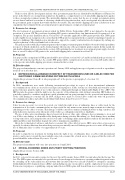Page 1133 - SAIT Compendium 2016 Volume2
P. 1133
EXPLANATORY MEMORANDUM ON THE TAXATION LAWS AMENDMENT BILL, 2015
Under section 12P, the listed grants and any other government grants that are identi ed by the Minister of Finance by notice in the Gazette are exempt from normal tax. In addition, a comprehensive set of anti-double-dipping rules applies to these exempted government grants. The anti-double-dipping rules ensure that the use of exempt government grants are not abused and used as a means of achieving a further net tax reduction that can be used against any other income of the government grant recipient that would otherwise be taxable. The anti-double- dipping rules deny a deduction of any expenditure that is funded by the government grant recipient using an exempt government grant.
II. Reasons for change
The tax treatment of government grants provided for Public Private Partnerships (PPP) is not aligned to the speci c provision of section 12P. The provisions regulating PPP grants contained their own limitations rules for purposes of an exemption. The speci c limitation rule in section 10(1)(zI) currently applicable to PPP grants provides that a PPP grant is only eligible for an exemption to the extent that the PPP grant was expended by the recipient to fund improvements on land or to buildings. This limitation was introduced to support the country’s infrastructure development by curbing any circular reduction of allocated funds back to the scus.
The policy position with all government grants is that exempt government grants should not be used to fund expenditure in respect of which a deduction can be claimed against other income of the government grant recipient. In this regard, the anti-double-dipping rules contained in the section 12P regulating the tax treatment of government grants apply. As such, there is a need to subject PPP grants to the anti-double-dipping rules contained in section 12P.
III. Proposal
It is proposed the exemption for PPP grants should be moved from section 10(1)(zI) and be included in the provisions of section 12P of the Income Tax Act. As a result, PPP grants will be exempt from tax in terms of section 12P and be subject to the speci c anti-double-dipping provisions contained in that section.
IV. Effective date
The proposed amendments come into operation on 1 January 2016 and apply in respect of grants received or expenditure incurred on or after that date.
4.4 DEPRECIATION ALLOWANCE IN RESPECT OF TRANSMISSION LINES OR CABLES USED FOR ELECTRONIC COMMUNICATIONS OUTSIDE SOUTH AFRICA
[Applicable provisions: Item (B) of sub-paragraph (dd) of the proviso to paragraph (f) of section 11]
I. Background
In 2009, amendments were made following international precedent in respect of how international submarine telecommunications cables are treated for tax depreciation purposes. Cable systems are often built and owned by a few parties who may grant the right of use to this system to a third party through an ‘Indefeasible Right of Use’ (IRU). The IRU provides the grantee with the right to use the capacity of the submarine cable without ownership. IRU holders are generally required to contribute an upfront capital premium and on-going amounts for the operation and maintenance of the cable during its economic life. In 2014, changes were made to section 12D to reduce the write-off period for telecommunication lines and cables used within South Africa from 20 years to 15 years.
II. Reason for change
It has become necessary to review the period over which the right of use of submarine lines or cables used for the transmission of electronic communications are depreciated for two main reasons; namely, improvements in technology and damages to the cables over time. This damage could be caused by commercial shing trawlers or ship’s anchors, and natural disasters experienced in other parts of the world e.g. earthquakes and sub-sea landslides.
The use of bre optics in submarine lines is bene cial; however, bre optic cabling is also not immune to wear and tear. Cable route damage is often in icted by third parties during activities like shing, etc. Such damage has a medium to long-term effect, increasing the bre stress levels and / or bending radius and normally results in the introduction of additional bre joints that further degrade the cable’s transmission capabilities.
Given the technological advances and shorter economic life of the affected assets, IRUs entered into at present are typically for shorter durations than when this provision was initially enacted. Industry practice is to write off the right of use of submarine lines or cables over approximately 15 years.
III. Proposal
In order to align the tax treatment for writing down the right of use of submarine lines or cables with international practice and to move towards the most suitable expected economic life of such assets, it is proposed that the write-off period should be reduced from 20 years to 15 years.
IV. Effective date
The proposed amendment will come into operation on 1 April 2016.
4.5 SPECIAL ECONOMIC ZONES ANTI-PROFIT SHIFTING PROVISION
[Applicable provision: Section 12R]
I. Background
In 2013, a special tax incentive regime for the new Special Economic Zones (SEZ) was introduced in the Income Tax Act. The SEZ regime was introduced to provide more focused support for businesses operating within designated zones by extending on the value-added tax and customs duty incentives that were already available to enterprises operating within Industrial Development Zones (IDZs) and including income tax incentives and the employment tax incentive. For income tax purposes, a qualifying company under the new SEZ regime will bene t from an accelerated depreciation
SAIT CompendIum oF TAx LegISLATIon VoLume 2 1125


